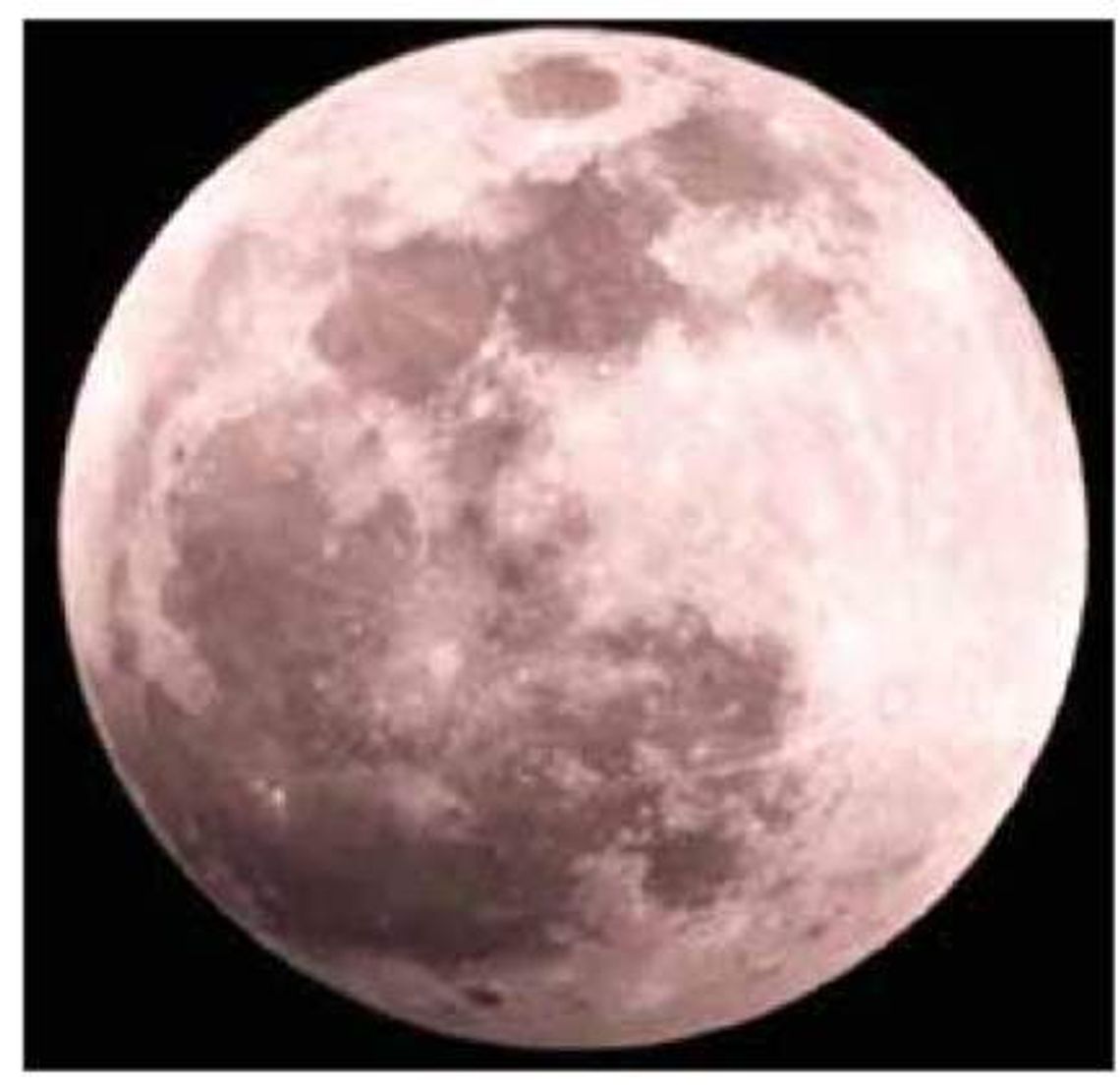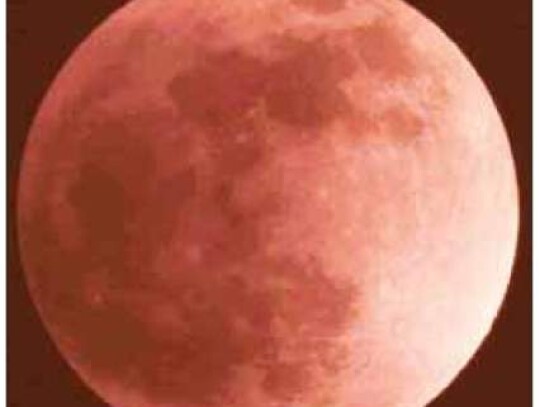I’m writing this article on May 16, the night after the best lunar eclipse event I’ve seen since about 2000. Absolutely clear skies, zero wind and coolish temperatures, which was nice after a very hot afternoon.
I had notified my rural neighbors via our neighborhood Facebook page. I could hear voices in the distance, so I know several were out on their patios doing the same thing I was, watching a free light show of nature’s beauty.
Taking lunar photos that look good on your cell phone or computer screen is easy these days, and that’s a good thing. Taking lunar photos that will show up in print isn’t so easy, especially in full eclipse.
The two lunar images here are before and during mid-eclipse. I could have kicked myself for not setting up my large binoculars, which would have been the perfect viewing instrument. Instead, I used my little 12-by-36 image stabilized Canon binoculars, which worked fine. It’s fascinating watching the Earth’s shadow creep across the moon’s surface in binoculars. I hope you all took advantage to see a lunar eclipse on such a fine night.
Total lunar and solar eclipses are kind of a freak of nature, which may very well not happen anywhere else in the galaxy. They certainly don’t happen on any other planet in our solar system ever.
It happens on Earth because the moon and the sun are almost exactly the same diameter (as seen from Earth). The sun is 93 million miles from the Earth, but is gigantic in its relationship to our little planet. It is 864,949 miles in diameter. In comparison, the Earth is 7,926 miles in diameter.
The moon is 2,159 miles in diameter, but is only 238,900 miles from Earth. So the moon appears to be exactly the same diameter as the sun as seen from Earth, quite a convincing illusion. That allows them to eclipse or block out the light from each other when they very occasionally cross each other’s path in our sky.
A solar eclipse is when the moon blocks out the solar disk, i.e., it is between the Earth and the sun. A lunar eclipse occurs when the Earth is between the sun and the moon, therefore the Earth’s shadow is exactly crossing the moon’s path for a brief time.
This is a long way around about telling you how early astronomers came to know the Earth was round. “Wow,” you say, I’ve often wondered how they figured that out!
Well, an eclipse like the one on May 15 provided the important clue. Quite simply, the shadow of the Earth covered the moon (but it was clearly a curved shadow, not a straight line). Voila, the Earth must be round, much to the dismay of Flat Earthers everywhere.
This discovery was made in the 5th century BC, or about 2,700 years ago. We know this because the Greek philosophers wrote about it. As a practical matter, Ferdinand Magellan circumnavigated the globe from 1519 to 1522, proving it once and for all.
On a related matter, what do you think of when you think of our sun? Hint it’s not made of fire, ha ha. It’s energy comes from nuclear fusion at its core, where the temperature exceeds 15 million degrees Farenheit under tremendous pressures. Factoid to remember, every second the sun converts 600 million tons of hydrogen into 596 million tons of helium. The remaining 4 million tons becomes energy, a process that will continue over the next 5 billion years.
Also it takes less than 9 minutes for a photon of light (energy) to cross the vacuum of space from the sun to the Earth, but it can take 100,000 years to travel from the sun’s core to it’s outer layer where it becomes visible light. Such is the tremendous gravity of the sun.
If you’re actually into astronomy enough to own a telescope or binoculars, this is the perfect time to be out at night in the dark. Most of the large and colorful nebulae resides in the constellations conveniently located in the evening summer skies. A really good spiral bound helper book is “Binocular Highlights” by Gary Seronik, published by Sky & Telescope. It’s a must have for finding things with your binoculars.
For those fortunate enough to have a telescope, I recommend the “Pocket Sky Atlas – Jumbo Edition” by Roger Sinnott, also published by Sky & Telescope.
One final item, mark July 23, 2022, on your calendar. There will be a city of Boerne public star party at City Lake that night, weather permitting. More information later.










Comment
Comments